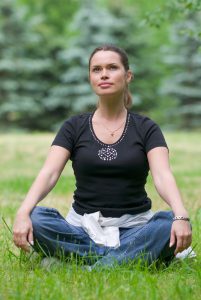A few years ago, I found myself juggling too much, including: work, family, school, health, and everything in between. I was constantly exhausted, mentally foggy, and emotionally drained. I didn’t realize it at the time, but I was neglecting more than just my physical health. It wasn’t until I began exploring the idea of wellness in a broader sense that I started to feel whole again. I learned that wellness is about far more than eating right or exercising; it’s about nurturing every part of your life.
The most difficult thing for me to grasp was that wellness is not a destination, it’s an ongoing process and a lifelong journey. It’s about making intentional choices every day that contribute to your overall well-being, no matter where you are starting from. At its core, wellness is more than just physical health. It is the balance and integration of multiple interconnected dimensions that together form a strong foundation for a thriving life.
When we take a holistic approach to our health, we acknowledge that all aspects of our lives—mental, emotional, physical, social, and more—are connected. Focusing on the eight dimensions of wellness can not only improve your quality of life, but also contribute to longer life expectancy, better management of health conditions, and support in recovering from illness, injury, or addiction. It can even help prevent burnout, reduce stress, and increase life satisfaction.
The 8 Dimensions of Wellness
Each of the eight dimensions plays a vital role in your overall health and happiness, otherwise known as holistic health. When nurtured, they work together to create a more balanced and meaningful life. Here’s a look at what they are and how you can start integrating them into your life:
- Physical Wellness: Physical wellness involves taking care of your body through regular exercise, proper nutrition, adequate sleep, and preventive healthcare. Staying physically well boosts your energy, enhances your mood, and helps prevent chronic illness. To improve physical wellness, try this: Take a daily walk, drink more water, or schedule that overdue check-up. Start with one healthy habit and build from there.
- Emotional Wellness: Emotional wellness is the ability to understand, express, and manage your emotions in a healthy way. This includes recognizing stress, building resilience, and seeking support when needed. To improve emotional wellness, try this: Practice mindfulness, journal your feelings, or talk to a trusted friend or therapist when you’re feeling overwhelmed.
- Social Wellness: Social wellness is about creating and maintaining meaningful relationships and a strong support network. Connecting with others fosters a sense of belonging and can improve both mental and emotional health. To improve social wellness, try this: Reach out to a friend you haven’t spoken to in a while, join a community group, or attend a local event.
- Intellectual Wellness: Intellectual wellness encourages lifelong learning, critical thinking, and the pursuit of knowledge. Challenging your mind and staying curious can boost your confidence and creativity. To improve intellectual wellness, try this: Read a book, take an online class, learn a new hobby, or engage in thoughtful discussions.
- Environmental Wellness: Environmental wellness involves creating and sustaining a safe, healthy, and supportive space around you. This includes caring for your physical surroundings and being mindful of your impact on the planet. To improve environmental wellness, try this: Declutter your living space, spend time in nature, or reduce waste by recycling or using reusable products.
- Spiritual Wellness: Spiritual wellness is about finding purpose, meaning, and connection in life. Whether through religion, meditation, nature, or personal reflection, spiritual practices can offer clarity and inner peace. To improve spiritual wellness, try this: Start your day with a moment of gratitude, reflect in a journal, or explore practices that align with your values and beliefs.
- Vocational Wellness: Vocational wellness means pursuing work or academic paths that are fulfilling, align with your values, and make use of your strengths. It also involves finding a balance between work, school, and home life. To improve vocational wellness, try this: Reflect on your strengths and passions, set goals that align with your values, or find ways to bring more purpose into your daily tasks.
- Financial Wellness: Financial wellness involves understanding and managing your financial resources. It includes budgeting, saving, and planning for the future. Planning skills will help reduce stress and build long-term stability. To improve financial wellness, try this: Set a monthly budget, start a savings plan, or seek out resources to improve your financial literacy.
Wellness Is for Everyone
Wellness is not reserved for a select few or those with perfect routines. It’s for everyone, no matter your age, background, or current circumstances. The beauty of wellness is that it’s highly personal, flexible, and does not have to be perfect. You don’t have to overhaul your entire life to make progress. You don’t have to address all eight areas at once. Even small, meaningful actions in one area can spark positive change in others. This can create a ripple effect across your entire holistic well-being.
Focus on progress, not perfection. Take time to reflect on what wellness means to you. Seek support when needed. And most importantly, be kind to yourself as you grow. Growth doesn’t happen overnight, but with intention and self-compassion, you can build a life of balance, vitality, and purpose.
- The 8 Pillars of Health and Wellness - November 21, 2025
- Safe Summer Cooking: The Importance of Proper Cooking Temperatures - September 5, 2025
- Protecting Your Family’s Skin: The Importance of Sun Safety - March 1, 2025


